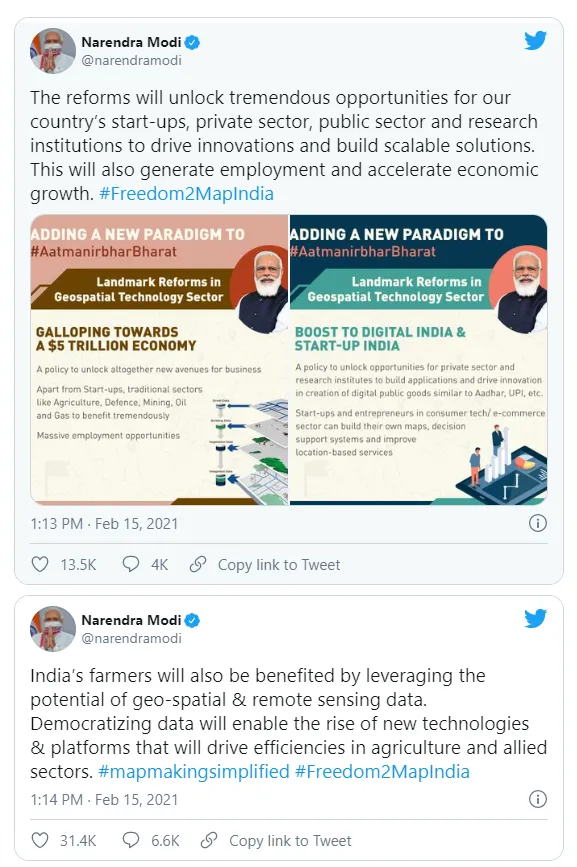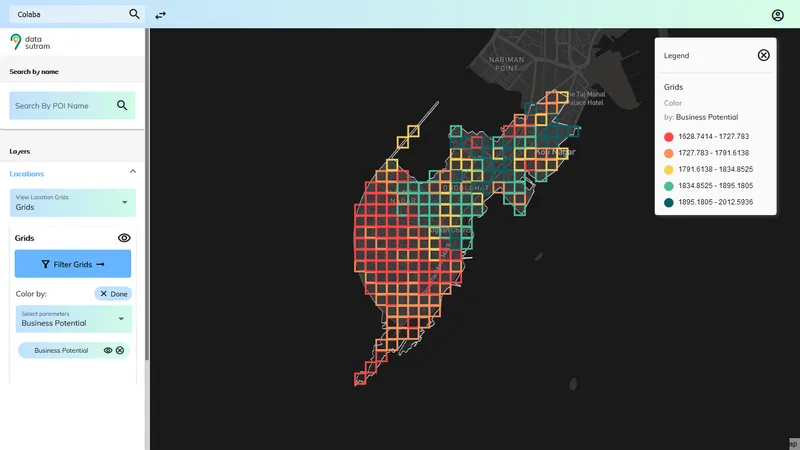Geospatial data: India’s roadmap to a $5T economy
The new government policy gives Indian entrepreneurs the opportunity of using location intelligence to develop new products and solve problems.
“Data is the new oil.” This phrase has frequently appeared across articles, magazines, and keynote speeches, but, in reality, there has been a challenge in implementing the same. One of the major reasons is accessibility to data and regulations regarding the same.
The Indian government’s recent decision to democratise and liberalise geospatial data and map-based services has taken India one step ahead in this mission of adopting data as the new oil.
The geospatial data and analytics market is one of the fastest-growing markets in the world, poised to become worth $157 billion by 2027.
What is geospatial data?
Geospatial data refers to static and dynamic attributes of a location on the surface of earth. It could be a place of interest like a mall, restaurant, or a socio-economic attribute like footfall or spending capacity of a location.
With the rise of smartphones, sensors, and satellites, data is getting generated every minute about every place on earth. Mapping all of this data to a single location can help in generating such geospatial data.

Why geospatial data?
Geospatial data plays a crucial role in how primary sectors like financial services, agritech, pharma and healthcare, logistics, ecommerce, smart city planning, and several other sectors can be developed across the board.
Even for the government, the availability of geospatial data is a must for planning of infrastructure, development, social development, natural calamities, agriculture environment protection, power, water, transportation, communication, and health.
However, the Indian government had firm mapping restrictions and regulations rife with bureaucratic red tape and licensing norms. This has held the Indian mapping industry back for over a decade, despite the country’s enormous potential to be at the frontier of location intelligence enterprises.
The process of acquiring licences and permissions could take months and years, resulting in delay of projects.
What is the significance of this move?
In a world where shared-economy dominates the way we consume food and travel, location intelligence is paramount to determining that facilities are available on time.
During the pandemic, we saw first-hand, how location-based intelligence and actions like geofencing became important to tackle the spread of the virus and manage medical resources. Today, as India looks to become aatmanirbhar, there is a need for data-driven decisions.
However, the reality is that there is a huge lack of data in the country, which translates into a need for mapping data with high accuracy. This, if done, by the Indian government would take several years. Hence the need to incentivise the private sector to invest and collect this data.
The new geospatial policy released by the Department of Science and Technology removes most of these restrictions and regulations from Indian companies. With this move, it unleashes the possibility of Indian entrepreneurs using location intelligence to develop new products and solve problems.
It also enhances the efficacy of rural development policies like the SVAMITVA scheme. In a way, this move opens up the entire market in terms of access to crucial data and helps companies take advantage of those insights.
Its potential as a game-changer rivals that of the 1991 liberalisation move.

Globally, there are companies working towards access for geospatial data to make the lives of ordinary people better. However, Indian tech startups had to compete with big international players for innovating in this space in the international market while there were accessibility challenges in their own country.
The deregulation of geospatial data for Indians gives the native IT industry huge leverage over international players that have had a monopoly over data-driven services in the world.
Today, there is a chance to create a Google from India. This is a massive step towards the dream of new world information and economic order, one where #aatmanirbharbharat leads the way for revolutionary tech and innovation.
Edited by Teja Lele
(Disclaimer: The views and opinions expressed in this article are those of the author and do not necessarily reflect the views of YourStory.)








